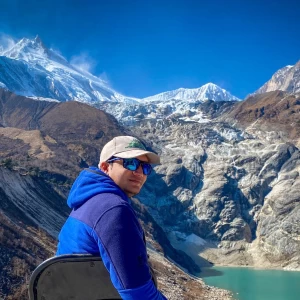The Mustang Region has 3 major trekking routes. However, you can get to customise them according to your choices.
Trekking In Mustang Nepal: 3 Major Treks of Mustang Region
Table of Contents
Mustang, Nepal, is a place where ancient culture meets breathtaking landscapes. Trekking in Mustang offers a unique adventure, blending stunning views with rich traditions.
Whether you're a seasoned trekker or a beginner, this guide will help you pick the best trek for your Mustang adventure.
In this article, we’ll guide you through the three major treks in Mustang inside the Kaligandaki River Valley. You'll learn how to plan your trek, choose the right route, and understand the challenges of the Mustang Trip.
Understanding the Mustang Region
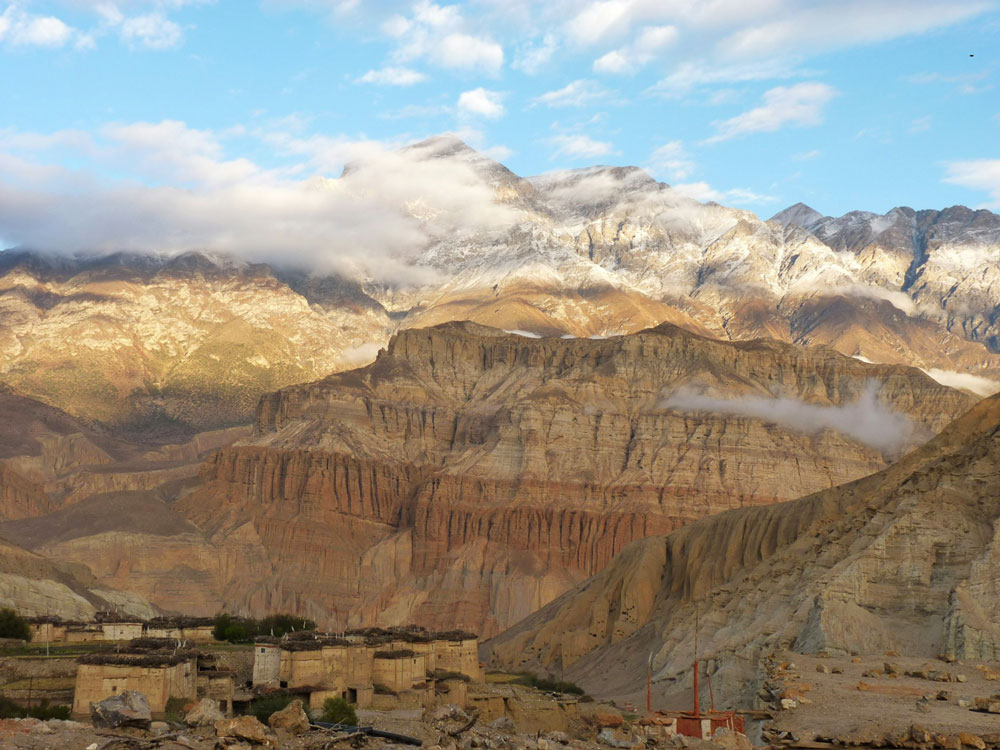
Mustang, Nepal, has a landscape that is very different from other parts. The region has deserts, deep valleys, and tall cliffs in the Tibetan Plateau.
You can also find ancient Buddhist monasteries scattered across Mustang. These monasteries keep the area’s rich cultural heritage alive. Alongside this, Mustang also features Lubra Village, which is one of the last Bon Buddhist Villages in the world.
The culture in Mustang is heavily influenced by Tibet. This makes the region feel like a place where time has stood still. Hiking in Mustang lets you explore both its unique geography and its fascinating culture.
Why Trekking in Mustang is Special
Mustang Trekking offers both adventure and cultural experiences. Mustang is in a rain-shadow area so you can trek even during the monsoon season.
As you trek, you’ll see remote villages, ancient monasteries and chortens. The landscapes are dramatic and unlike any other in Nepal. You’ll also experience the rich Tibetan culture that makes Mustang special.
The region has a variety of trekking options. Some trails are challenging, with high altitudes, while others are easier.
Also check, Affordable Mustang Tour - 5 Days
When to Trek in Mustang
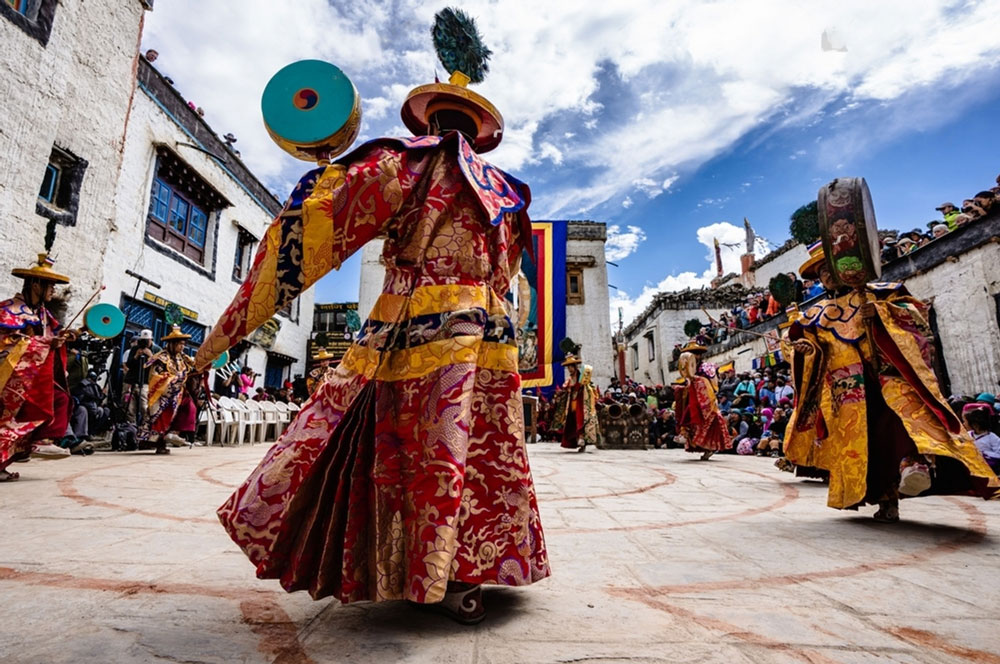
The best time to trek in Mustang is from March to November. The weather is stable, and the skies are clear. Below are the best seasons to trek:
Spring (March to May): Mild temperatures and blooming flowers make this season popular. Also features the Tiji Festival in the Upper Mustang region.
Monsoon (June to August): Mustang's rain-shadow area allows trekking even during the rainy season.
Autumn (September to November): Clear skies and vibrant landscapes offer beautiful trekking conditions.
Major 3 treks in Mustang
Mustang is the forbidden kingdom. It offers three major treks, each offering a distinct adventure and unique attractions.
Upper Mustang Trekking
The Upper Mustang Trek lets you explore an ancient Himalayan kingdom. This region was once a restricted area, which adds to its mystery.
The landscapes are unique, with barren mountains, deep valleys, and ancient sky caves. Trekking in the Upper Mustang feels like stepping back in time and discovering a hidden part of Nepal.
Things you should not miss in Upper Mustang
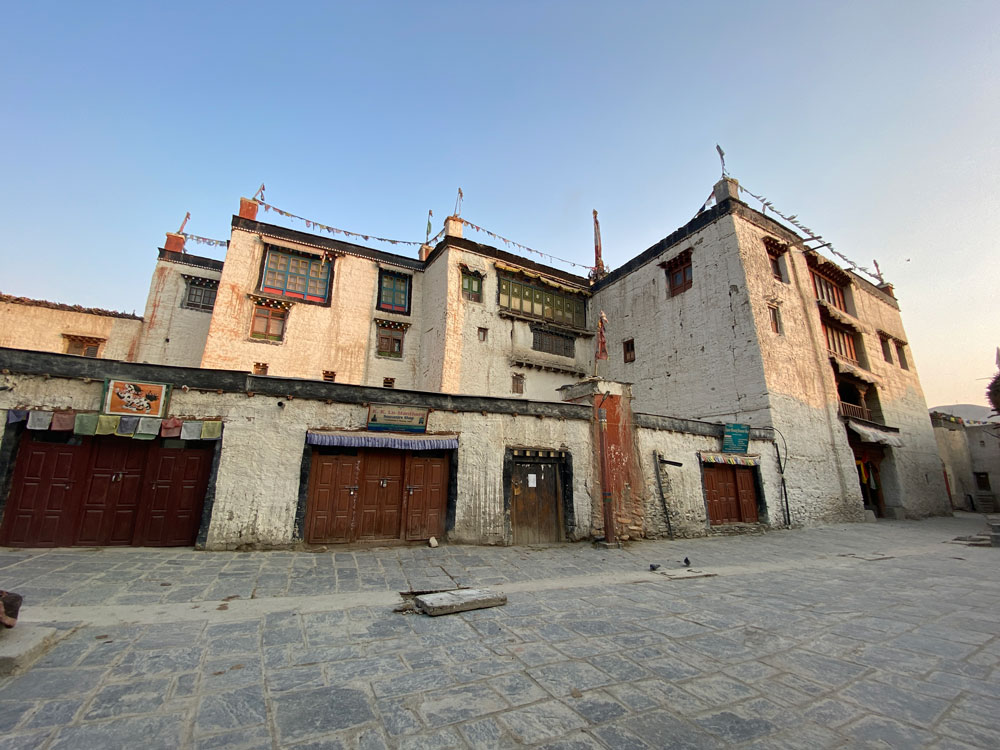
Lo Manthang:
Lo Manthang is the walled city and the heart of Upper Mustang. It has a rich history and cultural significance. It is the last forbidden Kingdom of Tibet. Walking through its narrow streets, you’ll see traditional houses, ancient monasteries, and the royal palace. This city is a living museum of the ancient Tibetan culture.
Life Style:
During the trekking in Mustang, you will meet local communities and learn about their unique traditions. The people have a rich Tibetan-influenced culture. In the Upper Mustang, Lopa and Thakalis are the common communities.
Their customs, language, and way of life are deeply rooted in history. Interacting with the locals adds depth to your trek. It makes the Mustang Trip more than just beautiful landscapes.
Unique Attractions:
The landscapes of Upper Mustang are barren but stunning. You’ll see rocky cliffs, deep gorges, and wide valleys. There are also ancient caves carved into the cliffs, used as homes and monasteries. They are called the sky caves. The scenery is different from the lush green hills of other parts of Nepal, offering a unique and unforgettable experience.
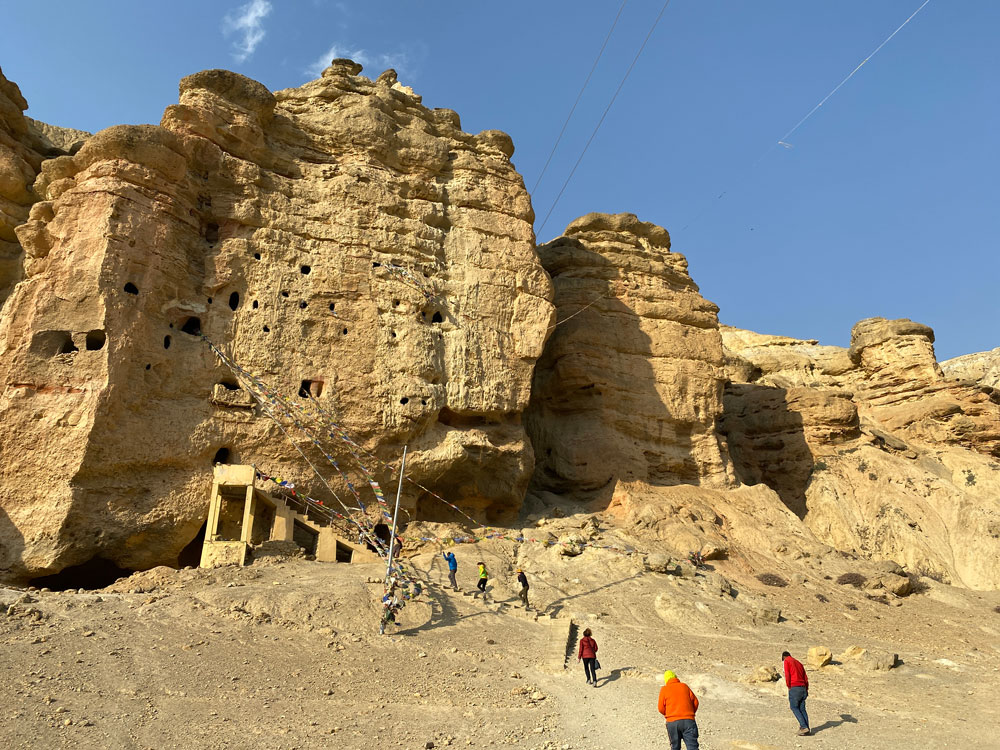
Overview of Upper Mustang Trek
The Upper Mustang Region Trek starts with a bus ride from Kathmandu to Pokhara, passing through green hills. After reaching Pokhara, you’ll take a flight to Jomsom, where the trek begins.
From Jomsom, you’ll walk to the village of Kagbeni, the gateway to the Upper Mustang Area. From Kagbeni, the journey continues through the diverse landscapes, passing through villages like Chaile, Syangboche, Ghami, and Charang before reaching the ancient walled capital of Lo Manthang.
After exploring the cultural and historical treasures of Lo Manthang, the trek retraces its path through Dhakmar, Geling, and Chhuksang before returning to Jomsom. The adventure concludes with a flight back to Pokhara and a scenic drive to Kathmandu.
What you can expect in the Upper Mustang Area region is the exploration of Ancient Buddhist Monasteries. The trek helps the travellers explore the Tibetan Buddhist Culture alongside the spectacular scenery of the Annapurna and Dhaulagiri ranges.
The major accessibility of this trekking is its connection to the Annapurna Circuit. Once you cross Thorong La Pass, you reach Muktinath Temple. From there onwards as well, you can continue your adventure to Lo Manthang either on a drive or by trekking.
With extremely fewer trekkers than in other regions of the country, the high-altitude desert of Upper Mustang never stops fascinating travellers with its value of local life.
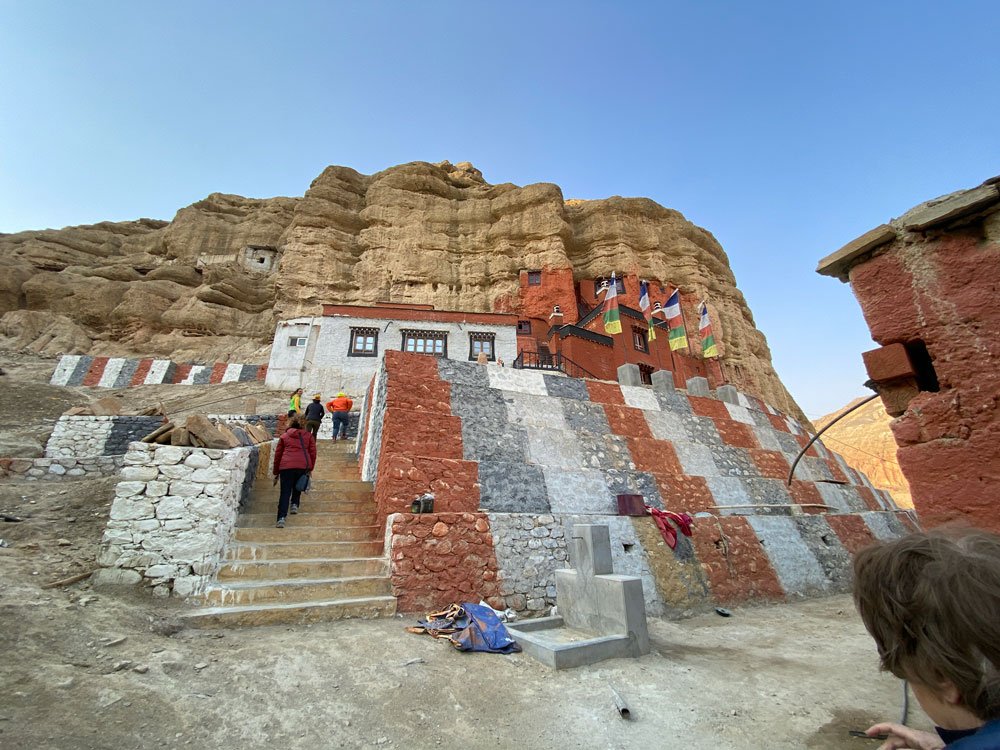
Challenges and Considerations
Duration: 17 days
Difficulty Level:
Moderate to Challenging: The trek demands good fitness due to the high altitudes and the remote nature of the region.
Considerations:
With elevations over 4,000 meters, proper acclimatization is essential to avoid altitude sickness. Plan for gradual ascent and monitor your health closely.
Entry to Upper Mustang requires special permits costing approximately $500 per traveller. Ensure these permits are secured well in advance. They cannot be obtained without being associated with a trekking company (Himalayan Scenery Treks).
You must have a licensed guide to obtain the necessary permits and navigate the trek. Ensure your guide is properly licensed and experienced in the region.
Prepare for cold and windy conditions, especially at higher altitudes. Pack warm, windproof clothing and be ready for variable weather.
Bring a basic first-aid kit and be aware of potential health risks. Consulting with a knowledgeable guide will enhance your safety and overall experience.
Lower Mustang Trek
The Lower Mustang Region Trek is perfect for those seeking an easier yet rewarding adventure of Mustang. This Lower Mustang offers stunning landscapes and is more accessible than the Upper Mustang Trek. With lower altitudes and less challenging terrain, it’s ideal for beginners.
Things You Should Not Miss
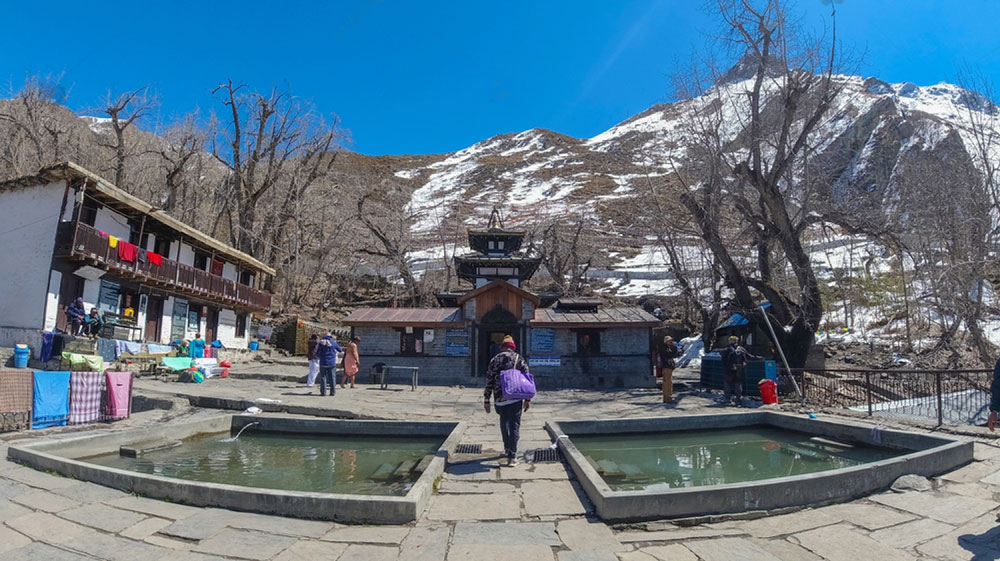
Kagbeni, Marpha, and Muktinath:
Kagbeni is a historic village that serves as the gateway to Upper Mustang. It’s known for its ancient houses, narrow alleys, and stunning views of the Kali Gandaki River. The village is also home to the Kag Chode Thupten Samphel Ling Monastery, a 15th-century Tibetan Buddhist monastery where monks continue to practice ancient rituals.
Marpha is a beautiful village renowned for its apple orchards and locally-made apple brandy. The village features whitewashed buildings and cobblestone streets, giving Marpha a unique charm. Marpha is also home to Marpha Monastery.
Muktinath is a sacred pilgrimage site for both Hindus and Buddhists. Located at the foot of the Thorong La mountain pass, Muktinath is known for the Muktinath Temple, dedicated to Lord Vishnu, and the 108 water spouts surrounding it. The site also features the Jwalamai Temple, where an eternal flame is kept burning, symbolizing the divine.
Hot Spring at Tatopani:
Tatopani, meaning “hot water” in Nepali, is renowned for its natural hot spring. After hours of trekking, these hot springs provide a perfect place to relax and soothe your tired muscles. The warm waters are believed to have healing properties, making it not just a treat for your body, but also for your mind.
Overview of Lower Mustang
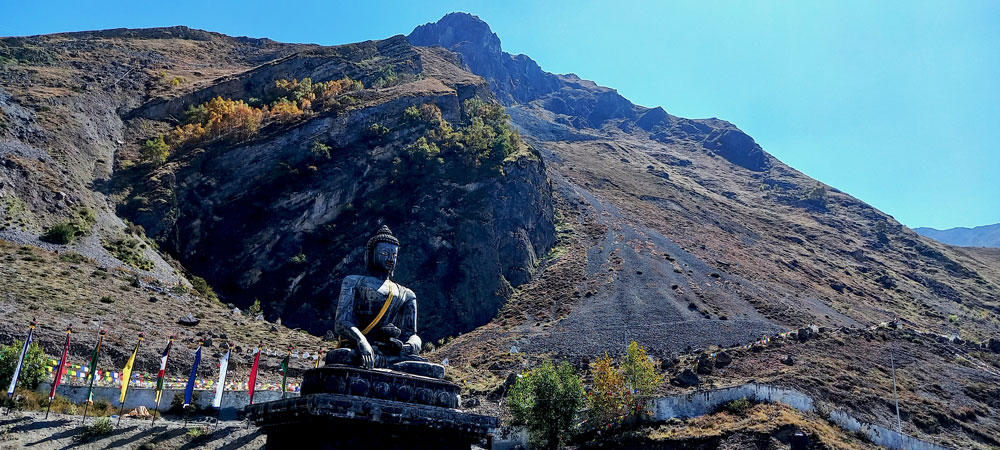
Upon arriving in Kathmandu, you'll be picked up and transferred to your hotel for check-in. You’ll rest and stay overnight to prepare for your trek.
The next morning, you’ll fly from Kathmandu to Pokhara, which takes about 25 minutes. From Pokhara, you'll board a short 15-minute flight to Jomsom, the starting point of the Lower Mustang Trek.
Or, You can take a bus to Jomsom (375 km) from Gongabu Buspark. It can take approximately 25-28 hours depending on the road.
On Day 3, you’ll begin your trek from Jomsom to Kagbeni, a village at 2,858 meters. The trek covers approximately 10 kilometres and takes about 4 to 5 hours. Kagbeni is known for its traditional Tibetan-style houses. It also offers stunning views of the surrounding mountains.
On Day 4, you will trek from Kagbeni to Muktinath. The distance is about 13 kilometers. This trek takes around 5 to 6 hours. Muktinath is a sacred site. It has a famous temple with 108 water spouts. It is an important cultural and spiritual place. You can explore the temple’s ancient architecture. You can also learn about its significance.
On Day 5, you’ll trek back from Muktinath to Jomsom, covering the same distance of 13 kilometres. This trek takes about 5 to 6 hours and offers beautiful views of the Kali Gandaki River and the Himalayan ranges.
On Day 6, you’ll fly from Jomsom to Pokhara, and then from Pokhara to Kathmandu. The flights offer spectacular views of the Annapurna and Dhaulagiri mountain ranges. You’ll arrive in Kathmandu with a collection of cherished memories from your Lower Mustang adventure.

Duration: 6 days
Difficulty Level:
Beginner-Friendly: The Lower Mustang Trek is relatively easy compared to higher altitude treks, making it suitable for those new to trekking or with moderate fitness levels.
Considerations:
Be prepared for sudden weather changes. Conditions can shift from sunny to rainy or windy, so packing layered clothing is essential.
Though the trek is at lower altitudes, it's still important to acclimatize properly to avoid altitude sickness.
Ensure you have the necessary permits, including the TIMS card and ACAP permit, to trek in the Mustang region.
Respect local customs and traditions in the Mustang region to enhance your travel experience and interactions with locals.
Damodar Kunda Trek
The Damodar Kunda Trek is an adventurous journey if you choose the Mustang Trek. This trek is lesser known but offers both challenges and rewards. It starts from the lower Mustang and extends its trails through the Upper Mustang as well. Thus, can be called a combined trekking in the lower and Upper Mustang region.
It is ideal for experienced trekkers. The trek requires physical effort. It also holds spiritual significance. Damodar Kunda is a revered pilgrimage site.
Things You Should Not Miss
Sacred Lake: Damodar Kunda, at 4,890 meters, is a sacred lake with deep spiritual importance. According to the Barah Puran, bathing in this lake cleanses sins and brings spiritual relief. The serene, cold waters are central to many religious rituals.
Remote Wilderness: The trek offers a chance to explore untouched high-altitude landscapes. You'll traverse through pristine, remote wilderness, away from the crowds. This isolation provides a unique and tranquil trekking experience.
Panoramic View: The hike offers breathtaking views of the Annapurna Range. You’ll also see the towering Damodar Himal, which is 6,706 meters tall. From higher viewpoints, you can view the expansive Tibetan Plateau. The Annapurna Himalayan massif is also visible from these points.
Unique Attractions and Festivals
Festival Time: Plan your trek during the full moon in August to witness the Yartung Festival in Gelling and Chhusang. This vibrant celebration draws Hindu and Buddhist pilgrims alike, featuring religious ceremonies, traditional dances, and horse races. Experiencing this festival will give you a unique glimpse into the cultural richness of the region.
Cultural Sites: Throughout your trek, you'll encounter significant cultural landmarks. In Kagbeni, visit the Kag Chode Thupten Samphel Ling Monastery, a 15th-century Tibetan Buddhist site. In Marpha, explore the Marpha Monastery, adding to the village's serene atmosphere. At Muktinath, the sacred Muktinath Temple and the Jwalamai Temple, with its eternal flame. Additionally, the Damodar Kunda and Luri Gumba in Yara are the major cultural sites of the region.
Overview Of Damodar Kunda Trek
Upon arriving in Kathmandu, you’ll be picked up and transferred to your hotel for check-in. After resting overnight, you'll embark on a 7-hour bus journey to Pokhara, where you’ll stay overnight at a hotel. Pokhara is known for its beautiful lakes and stunning views of the Annapurna, Manaslu, and Dhaulagiri mountains.
From Pokhara, you'll fly to Jomsom and then begin your trek to Kagbeni. This 4-hour trek will take you through the gateway to the Mustang region, where you’ll stay overnight at a tented camp.
The next day, you’ll trek from Kagbeni to Chaile, ascending to an altitude of 3,100 meters over 6 hours. After staying overnight in a tented camp, you’ll continue your journey from Chaile to Syangboche, trekking for 7 hours to reach 3,800 meters.
Following this, you’ll trek from Syangboche to Tsarang, maintaining an elevation of 3,800 meters over another 7-hour trek. You’ll spend the night in a tented camp before heading from Tsarang to Lo-Manthang. This shorter 4-hour trek will take you to the ancient walled city of Lo-Manthang, where you’ll explore the area and stay overnight.
After a day of exploring Lo-Manthang, you’ll trek to Yara at 3,900 meters, covering the distance in about 6 hours. The following day, you’ll trek to Ghuma Thanti, reaching 4,890 meters over a 7-hour journey, and stay overnight at a tented camp.
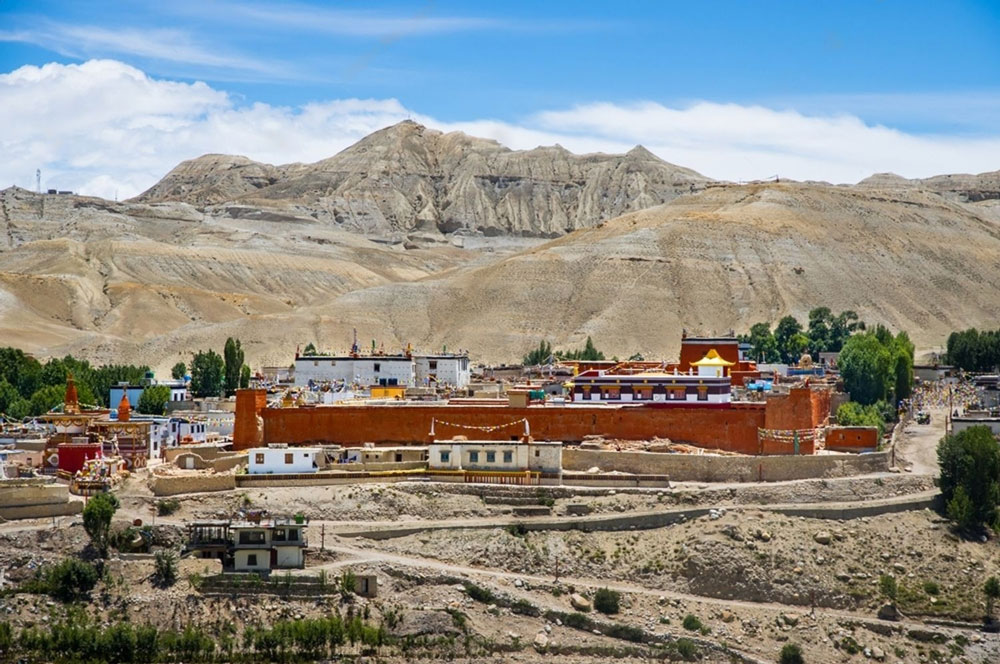
Your trek will then take you from Ghuma Thanti to Damodar Kunda, the highest point of the trek at 5,400 meters. This 8-hour trek is challenging but rewarding, offering stunning views of the surrounding mountains. After spending the night at Damodar Kunda, you’ll retrace your steps back to Ghuma Thanti in a 7-hour trek.
From Ghuma Thanti, you’ll trek back to Yara, descending over a 7-hour trek to 3,900 meters, and stay overnight at a guesthouse. The next leg of your journey takes you from Yara to Tangye, a 7-hour trek to 3,240 meters, followed by a 9-hour trek from Tangye to Tetang, at 3,040 meters.
After an overnight stay in Tetang, you’ll trek to Muktinath, a 6-hour journey that brings you to 3,700 meters. Muktinath is a sacred site for both Hindus and Buddhists, and you’ll have time to explore before staying overnight at a tented camp.
The final trek takes you from Muktinath to Jomsom, a 5-hour trek descending to 2,750 meters. From Jomsom, you’ll fly back to Pokhara and then return to Kathmandu, concluding your adventurous trek.
Challenges and Considerations
Duration: 12 to 14 days
Difficulty Level:
Physically Demanding: The Damodar Kunda Trek requires a high level of fitness due to its challenging terrain and several days at high altitudes.
Considerations:
Proper acclimatization is crucial to prevent altitude sickness. Gradual ascent and listening to your body are key.
Be ready for cold and windy weather, especially at higher elevations. Pack warm, windproof clothing and be prepared for temperature fluctuations.
Stay well-hydrated and maintain a balanced diet to support your energy levels throughout the trek.
Consulting with an experienced guide can enhance your safety and navigation, especially in remote areas.
Obtain all necessary permits, including the TIMS card and restricted area permits, before embarking on your trek.
Engage in a fitness regimen focusing on endurance and strength training to prepare for the trek’s demands.
Choosing the Right Trek for You
Choosing the right trek is important. It helps you have the best experience in the mountains. Each trek offers something different. Some treks challenge you with high altitudes. Others show you the beauty of nature. Some take you on a journey into cultural and spiritual discovery.
Compare the difficulty, duration, and key experiences of the Upper Mustang, Lower Mustang, and Damodar Kunda treks. This will help you find the one that matches your interests and abilities. Whether you're a beginner or an experienced trekker, there’s a perfect trek for you in the Mustang region.
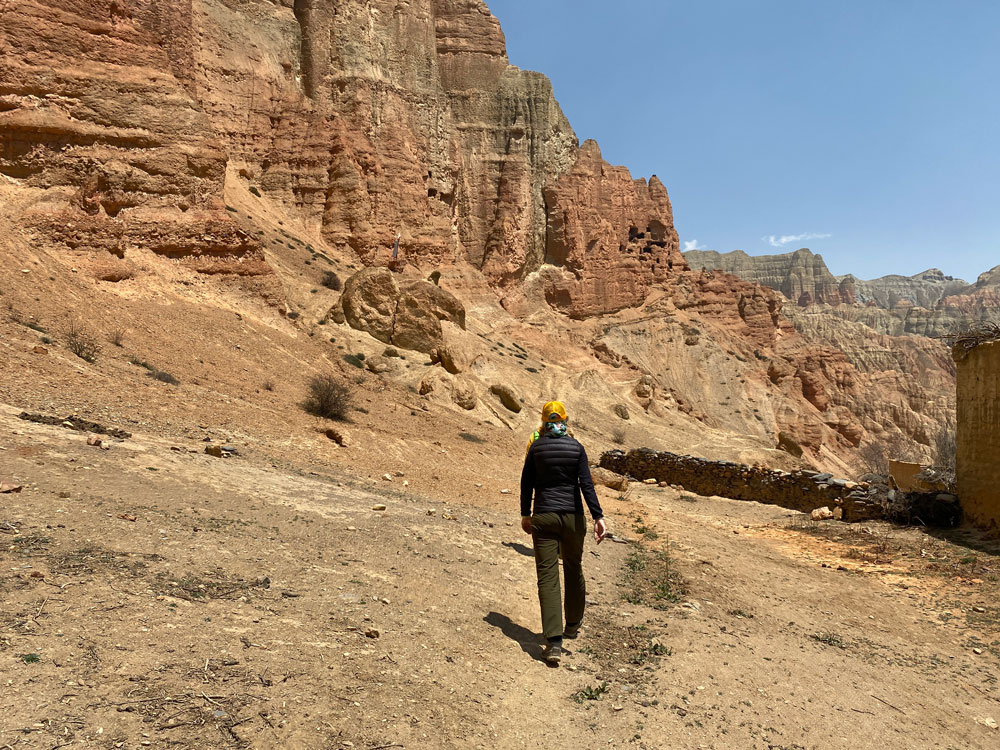
Comparing the Three Treks
Difficulty Level:
Upper Mustang: This trek is moderately difficult. It’s best for people who have some trekking experience because the trail goes high up in the mountains.
Lower Mustang: This trek is easier and good for beginners. The paths are not too steep, and it’s a good choice if you’re new to trekking.
Damodar Kunda: This trek is the hardest of the three. It’s best for people who are fit and have done challenging treks before.
Duration:
Upper Mustang: This trek takes about 17 days to complete. It’s a longer trek, so you’ll need more time.
Lower Mustang: This trek takes around 9 days. It’s shorter and can fit into a tighter schedule.
Damodar Kunda: This trek lasts about 12 to 14 days. It’s longer than Lower Mustang but shorter than Upper Mustang.
Key Experiences:
Upper Mustang: You’ll see ancient caves, traditional Tibetan culture, and stunning desert-like landscapes. It’s a great choice if you want to explore a remote and culturally rich area.
Lower Mustang: You’ll experience beautiful mountain views, charming villages, and a mix of nature and culture. It’s perfect for those who want a glimpse of the Mustang region without too much effort.
Damodar Kunda: You’ll visit sacred lakes, see high mountain peaks, and have a spiritual experience. This trek is great for those who seek both adventure and spiritual fulfilment.
Who Should Choose Each Trek

Upper Mustang: Choose this trek if you are an experienced trekker who enjoys learning about different cultures and likes being in remote places. It’s a great adventure if you want to explore hidden corners of the Himalayas.
Lower Mustang: This trek is perfect for beginners or people who don’t have much time but still want to see the beauty of the Mustang Region. It’s a good introduction to trekking in Nepal, with lovely views and less challenging paths.
Damodar Kunda: If you are looking for a tough trek and are interested in spiritual journeys, Damodar Kunda is the trek for you. It’s ideal for those who want a challenge and seek a deep connection with nature and spirituality.
Permits required for Trekking in Mustang
The major trekking issue lies in the permits. There are especially two permits required for Mustang. However, it depends upon the route you choose.
The lower Mustang up to Kagbeni and Muktinath comes under Lower Mustang. Thus, it only requires the Annapurna Conservation Area Project Permit (ACAP). However, once you go beyond these places, you need a special permit called the Upper Mustang Restricted Area Permit (RAP).
Hence, the special permit is required only in the case of Upper Mustang Trekking or Tour and Damodar Kunda Trek. Although you have the RAP in these regions, you will still need an ACAP.
Cost of ACAP: $30/person
Cost of RAP: $500/person
Conclusion
Trekking in Mustang offers an unforgettable trekking experience, whether you’re looking for a cultural journey, breathtaking views, or a spiritual retreat. Each trek; Upper Mustang, Lower Mustang, or Damodar Kunda has its unique appeal.

